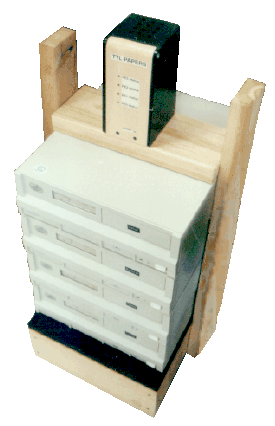TTL_PAPERS (July 1, 1994)

Just when we thought that things couldn't be done any simpler than the
first TTL_PAPERS, we realized a few things:
-
A simple 4-bit NAND across the processors can perform 1-bit
multibroadcast, and it also can broadcast, global OR, and global AND.
This also leads to a hardware design in which all PEs have identical
connections, so that PE numbering is simply a matter of convention.
-
By using two strobe signals to request a barrier synchronization,
static partitioning can be supported with minimal hardware.
-
Why have interrupt logic if you don't use it?
-
Although the simpler designs could not duplicate the 2 cycle data
communication performance of PAPERS1, no extra hardware is needed to
use a toggling ready signal to achieve 2 cycle barrier synchronization.
-
The single LED for each PE was not quite enough status information,
but a bi-color LED for each PE would add very little complexity.
We also made the power LED blue to avoid confusion with the PE status
LEDs. (Ok, we really did it because blue LEDs are cool, neato,
spiffy, keen... but don't tell anybody. ;-)
All of this led to a second TTL_PAPERS that was built using only 5
standard TTL chips. Well, it was really 6 chips if you count the
additional TTL driver chip we added later to brighten the LEDs. By
the way, the case is a slightly rounded version of the earlier TTL
PAPERS case, but made with Aspen instead of Oak.
Something else wonderful happened with this prototype: we finally got
a place where we could keep a PAPERS unit connected long term. Up to
this time, we had been borrowing a few of the 486DX2/66 machines in
the MSEE 190 undergraduate laboratory, but we could only use those
machines when classes didn't need them. The cluster of 486DX33
machines shown with the second TTL_PAPERS box finally gave us a place
to experiment without having to compete with undergraduate students for
access to the machines.
 The only thing set in stone is our name.
The only thing set in stone is our name.

